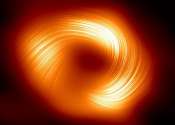The Astrophysical Journal is a peer-reviewed scientific journal covering astronomy and astrophysics. It was founded in 1895 by the American astronomers George Ellery Hale and James Edward Keeler. It publishes three 500-page issues per month.
Since 1953, The Astrophysical Journal Supplement Series has been published in conjunction with The Astrophysical Journal. It aims to supplement the material in the journal. It publishes six volumes per year, with two 280-page issues per volume. The journal and the supplement series were both published by the University of Chicago Press for the American Astronomical Society. In January 2009 publication was transferred to Institute of Physics Publishing, following the move of the society s Astronomical Journal in 2008. The reason for the changes were given by the Society as the increasing financial demands of the Press.
The Astrophysical Journal Letters is another section of The Astrophysical Journal intended to publish rapid communications.
- Publisher
- Institute of Physics Publishing
- Country
- United States
- History
- 1895–present
- Website
- http://iopscience.org/apj
- Impact factor
-
6.063 (Journal)
5.158 (Letters)
15.206 (Supplement)
(2010)
Some content from Wikipedia,
licensed under CC BY-SA



